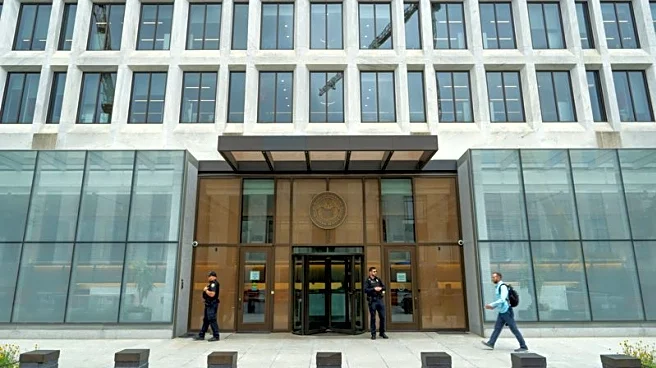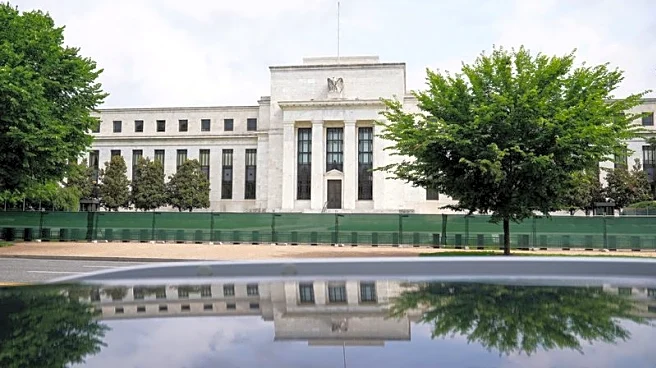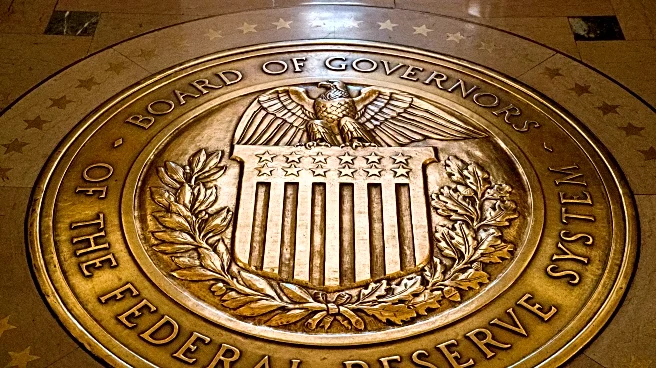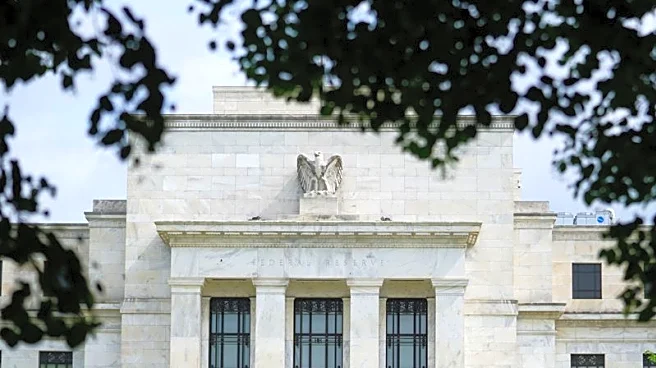What's Happening?
The Federal Reserve has announced a reduction in its key lending rate by 0.25 percentage points, setting the new range at 4% to 4.25%. This marks the first rate cut since December of the previous year. The decision comes in response to a stalling job market, with recent reports indicating meager job gains and even a decline in June. The move is expected to initiate a series of rate cuts aimed at reducing borrowing costs across the United States. Federal Reserve Chairman Jerome Powell highlighted the downside risks to employment, despite the unemployment rate remaining relatively low at 4.3%. The decision was supported by 11 of the 12 voting members, with one member advocating for a larger cut.
Why It's Important?
The rate cut is significant as it reflects the Federal Reserve's response to a weakening job market and persistent inflation concerns. Lower interest rates are intended to stimulate economic activity by making borrowing cheaper for consumers and businesses. This move could potentially benefit sectors such as housing and consumer spending, which are sensitive to interest rate changes. However, the decision also underscores the challenges faced by the Fed in balancing economic growth with inflation control. President Trump has been vocal in his criticism of the Fed's previous reluctance to cut rates, arguing for more aggressive reductions to boost the economy.
What's Next?
The Federal Reserve's forecasts suggest the possibility of further rate cuts by the end of the year, with some members advocating for more aggressive reductions. The Fed's next meetings in October and December will be closely watched for additional rate adjustments. The ongoing debate over the appropriate level of interest rates is likely to continue, with potential implications for economic policy and market stability.
Beyond the Headlines
The rate cut decision highlights the tension between the Federal Reserve's independence and political pressures from the White House. President Trump's public criticism and attempts to influence Fed policy raise questions about the central bank's autonomy. This situation could have long-term implications for the Fed's credibility and its ability to manage monetary policy effectively.












